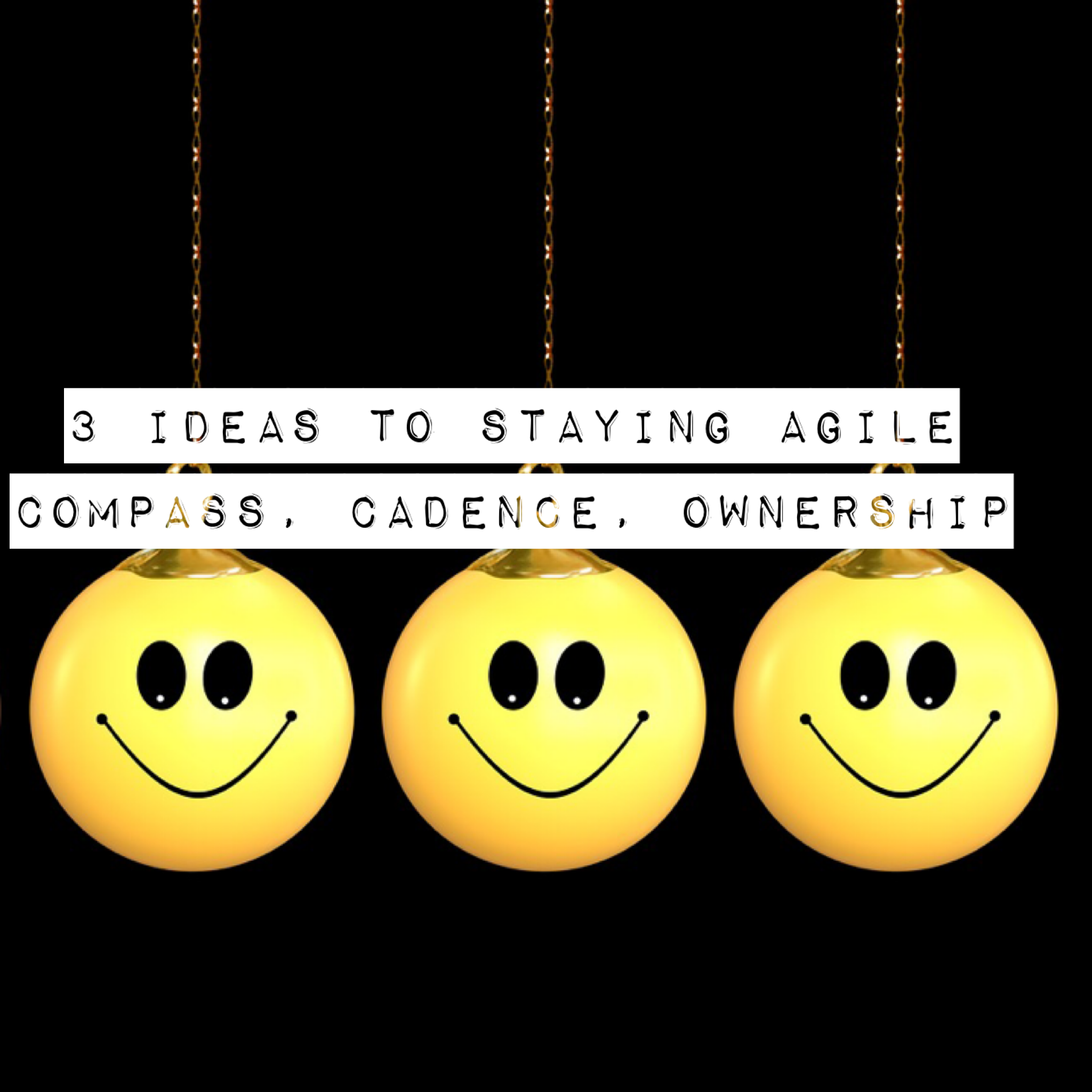SmartQA Digest
Exactly a year ago, I published the article “3 Ideas to Staying Agile – “Compass, Cadence, Ownership” that outlined handling change from individual, business and software dev practice. These were views outlined by industry thought leaders whom I had the pleasure to discuss with. In today’s Covid world that is filled with tremendous uncertainty, this article is worth a re-read.
“If we take a very pure sense of what agility means, it is actually an organization’s innate capability to survive and thrive in the long run” says Tathagat Varma in the SmartBites video “Agile What is it really?…”
Change in Business, Career : Compass vs. Maps
Anuj Magazine in the SmartBites video “Reinventing yourself in these changing times” says: “A extremely successful company like Nokia was wiped out when Apple launched iPhone. Why? My hypothesis is that companies that followed a compass approach as against a map approach survived.
Anuj Magazine in the SmartBites video “Reinventing yourself in these changing times” says: “A extremely successful company like Nokia was wiped out when Apple launched iPhone. Why? My hypothesis is that companies that followed a compass approach as against a map approach survived.
Compass gives a sense of direction of where you should be headed to and that sense of direction comes from knowing what is happening in your vicinity, whereas maps tell you to go from point A to point B and not worry about what’s happening around it.
The same analogy works very well with careers as well. If one follows compass approach, we will be encouraged to figure out what’s happening in our ecosystem and define the next step accordingly. If we follow the map approach the career paths tend to more map-like ‘move from SW Engineer to Sr Software Engineer’ whereas the world around is changing, and you’re still happy, scaling probably the wrong ladder.”
Change in the Organisation Structure
In the SmartBites video”The changing facet of our discipline/industry” Sudhir Patnaik says: “There is a tremendous shift towards a customer-backed approach. Everything that we do is keeping our customers in mind , the extreme mindset of product ownership and the one scrum team mindset is driving phenomenal change in how we deliver product. I think days are gone, when you have to develop, somebody else has to test and somebody else has to deploy. It is evolving in such a way that every single member of the team owns every responsibility. So if I am a developer or test engineer, I own development, I own testing, I own deployment, I own support. That’s the team extreme ownership. That’s a disruptor.”
In the SmartBites video”The changing facet of our discipline/industry” Sudhir Patnaik says: “There is a tremendous shift towards a customer-backed approach. Everything that we do is keeping our customers in mind , the extreme mindset of product ownership and the one scrum team mindset is driving phenomenal change in how we deliver product. I think days are gone, when you have to develop, somebody else has to test and somebody else has to deploy. It is evolving in such a way that every single member of the team owns every responsibility. So if I am a developer or test engineer, I own development, I own testing, I own deployment, I own support. That’s the team extreme ownership. That’s a disruptor.”
Change in SW Dev Practice
“The trends which are taking over software development, the whole software space, is in being Agile. People want to be able to deliver faster with a lot more flexibility. So what the tester needs to understand is that he has one big constraint and that is time. So you can try and reduce, squeeze as much time as you want if attention is being paid in the right places, you’ll still get the best bang for the buck. So I think that’s where we need to look at. We need to understand what’s happening in the world outside. We need to be able to focus, plan our work and execute to the plan in whatever limited time we have”, says Vivek Mathur in the SmartBites Video “The changing landscape of dev – What does this mean to SW testing?”
“The trends which are taking over software development, the whole software space, is in being Agile. People want to be able to deliver faster with a lot more flexibility. So what the tester needs to understand is that he has one big constraint and that is time. So you can try and reduce, squeeze as much time as you want if attention is being paid in the right places, you’ll still get the best bang for the buck. So I think that’s where we need to look at. We need to understand what’s happening in the world outside. We need to be able to focus, plan our work and execute to the plan in whatever limited time we have”, says Vivek Mathur in the SmartBites Video “The changing landscape of dev – What does this mean to SW testing?”
Cadence
In cycling/running there is an interesting concept of cadence. In the case of cycling, cadence is about how many times/minute you rotate the pedal. When you move from a plain terrain to a climb (change), the speed will drop. So the natural response is to expend more power by pedalling harder to maintain the speed. The challenge is that leg muscles work harder and tire out quickly.
In cycling/running there is an interesting concept of cadence. In the case of cycling, cadence is about how many times/minute you rotate the pedal. When you move from a plain terrain to a climb (change), the speed will drop. So the natural response is to expend more power by pedalling harder to maintain the speed. The challenge is that leg muscles work harder and tire out quickly.
This is where cadence comes handy. Instead of expending higher energy, shifting to lower gears and rotating the legs (pedals) faster results in maintaining the same speed on the incline. So it is typically recommended to spin at a higher cadence to compensate for the change. Cadence is about continuous motion to enable a good response to the change. High cadence implies nimbler movement and using information about the terrains as we ride enables one to respond well.
How does this relate to what we do? Break the problem into smaller chunks (lower gear) and keep the problem solving rhythm going good.
In this week’s SmartBits, Arun Krishnan outlines “What is big data/analytics?“.
beEnriched

3 Ideas to Staying Agile – “Compass, Cadence, Ownership”
June 6, 2019
In today’s world of constant change, staying agile is paramount to meaningful response. This article outlines how a Compass tool, the practice of Cadence and mindset of Ownership can help you stay agile.
expandMind
The Laws of Medicine: Field Notes from an Uncertain Science
October 24, 2019
Siddhartha Mukherjee investigates the most perplexing cases of his career ultimately identifying three principles that govern modern medicine.
SmartBites
||VIEWS FROM INDUSTRY LEADERS||smartbits
||NUGGETS OF LEARNING||
Signup for fresh content on SmartQA delivered to you every week.
